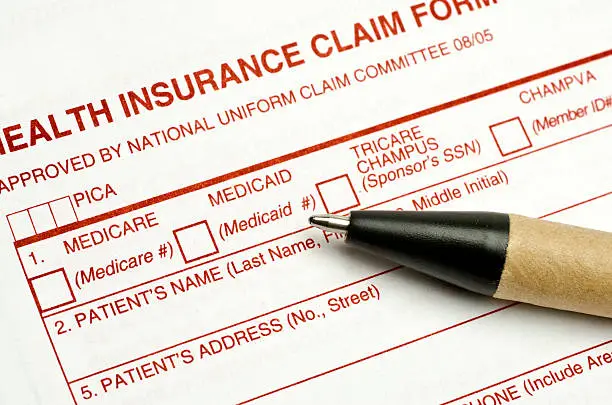We envision a world where everyone has the tools and knowledge to live a balanced, healthy, and fulfilling life. By providing reliable resources, personalized programs, and community support, we aim to be a beacon of hope for those on their health journey.
Table of Contents
Understanding Health Care Expenses
Stop Overpaying for Healthcare
Health care expenses encompass a wide range of costs associated with the medical services individuals receive. These expenses are not merely confined to the fees charged by healthcare providers but extend to several components that contribute to an individual’s overall financial burden. Primarily, insurance premiums represent one of the most significant costs, as these are monthly payments made to maintain health insurance coverage. Additionally, individuals must consider deductibles, which are the amounts that must be paid out-of-pocket before insurance begins to cover additional expenses. In tandem with these costs are copayments, the set fees required for each visit to a healthcare provider, further adding to the total financial obligations incurred by patients.
Out-of-pocket expenses are also a critical element in understanding health care costs, typically encompassing any costs not covered by insurance, such as certain medications or specialized treatments. These out-of-pocket costs may vary extensively depending on the insurance plan, the medical provider’s fees, and the specific type of care required. It is worth noting that while health insurance aims to buffer the costs incurred by obtaining medical care, overall expenses can vary substantially based on individual health circumstances, coverage selections, and provider networks.
Several underlying factors contribute to the rising costs of healthcare. Administrative expenses, which cover the costs of managing healthcare systems, can significantly inflate expenses without directly providing patient care. Additionally, provider pricing varies, often based on geographical location, competition, and the type of facility. The increasing prevalence of chronic diseases also plays a significant role in driving up health care costs, as ongoing management and treatment of these conditions demand continuous attention and resources. By comprehensively understanding these components, individuals can better navigate their health care expenses and seek effective strategies for reducing costs.
Assessing Your Health Insurance Plan

Evaluating your current health insurance plan is a vital step in managing your health care expenses effectively. Start by comparing coverage options available through different policies. Understanding the various types of health insurance plans, such as HMOs, PPOs, and EPOs, is essential as they each offer different levels of flexibility and cost-sharing. Utilize online comparison tools and resources to see side-by-side information about premiums, deductibles, copayments, and out-of-pocket maximums. This analysis will provide clarity on which plan aligns best with your financial and health care needs.
Delving into the specifics of your policy limits is equally important. Every health insurance plan presents certain limits regarding the services covered, and knowing these limitations can prevent unexpected expenses. Carefully read through the fine print of your plan to understand which medical services may not be fully covered, as well as any annual or lifetime caps that may apply. This knowledge will aid in making informed decisions regarding your health care options, ensuring you are well-prepared for potential costs.
Another critical factor to assess is the hidden costs associated with your health insurance. Often, plans may advertise low premiums but may have high deductible amounts or unexpected costs for specialist visits. Scrutinizing annual coverage statements can reveal how much you’ve spent compared to what was initially anticipated. It is also beneficial to evaluate how well your current plan caters to your personal health needs. Consider your frequency of medical appointments, prescription requirements, and any specialists you may need to see. Assessing how well the plan accommodates your unique health requirements can help determine if you are getting the best value for your premiums without compromising essential coverage.
Embracing Preventive Care
Preventive care is a vital component in the modern health care landscape, contributing significantly to the overall reduction of health care expenses. Regular check-ups, health screenings, and vaccinations can effectively identify potential health issues before they escalate into more serious conditions, which ultimately leads to lower treatment costs. By prioritizing preventive care, individuals can not only enhance their quality of life but also mitigate the financial burden associated with chronic diseases and other severe health problems.
One of the key benefits of engaging in preventive care is early detection. Routine screenings for conditions such as high blood pressure, diabetes, and certain cancers can provide insights into an individual’s health status. These screenings can signal the need for lifestyle changes or further medical intervention, significantly reducing the chances of requiring intensive treatments in the future. The emphasis on early diagnosis not only helps patients avoid escalating treatment costs but also allows for a broader range of treatment options, which are often less costly than those required for advanced-stage illnesses.
Vaccinations are another essential aspect of preventive care that can lead to considerable health care savings. Immunizations protect individuals from diseases that could result in serious health complications and expensive hospitalizations. By investing in vaccinations, patients can help curb the spread of infectious diseases within communities, thereby reducing overall public health expenses. Furthermore, when populations are immunized, the prevalence of diseases diminishes, leading to lower costs for health care systems as a whole.
Ultimately, embracing preventive care is not merely about individual health; it is an essential strategy for reducing overall health care expenses. By prioritizing regular check-ups, screenings, and vaccinations, individuals can take proactive steps to ensure their well-being while contributing to a more sustainable health care system.
Utilizing Health Savings Accounts (HSAs) and Flexible Spending Accounts (FSAs)

Health Savings Accounts (HSAs) and Flexible Spending Accounts (FSAs) offer valuable opportunities for individuals to manage healthcare expenses more effectively. Both accounts provide tax advantages, allowing users to save money that can be utilized for qualifying medical expenses. By understanding the unique features of HSAs and FSAs, individuals can make informed decisions that enhance their financial well-being and help mitigate rising healthcare costs.
HSAs are available to individuals enrolled in High Deductible Health Plans (HDHPs) and allow contributions to grow tax-free. Funds deposited into an HSA can be used for a wide range of medical expenses, including deductibles, copayments, and even some over-the-counter medications. One of the key benefits of HSAs is that the money does not expire, allowing account holders to save and invest for future healthcare needs. The account balance can carry over year to year, providing long-term savings potential as individuals plan for upcoming medical expenditures.
On the other hand, FSAs are employer-established benefits that let employees set aside pre-tax dollars for medical expenses within a given plan year. FSAs typically use a “use it or lose it” model, which means that unspent contributions may not roll over to the next year. Employers usually set a cap on contributions, requiring employees to estimate their healthcare spending accurately to maximize tax advantages. FSAs can cover a variety of costs, including copays, prescription medications, and dental expenses.
To effectively utilize HSAs and FSAs, individuals should assess their healthcare needs and spending habits carefully. Creating a budget that outlines expected medical costs for the year can play a crucial role in optimizing the benefits of these accounts. Moreover, staying informed about what qualifies as a medical expense under these programs will ensure that funds are allocated efficiently and sensibly.
Shopping Around for Medical Services
In today’s healthcare landscape, the costs associated with medical services can vary significantly depending on where and how care is provided. Shopping around for medical services is an essential strategy that can lead to substantial savings. learn Richer and Healthier The Surprising Link Between Wellness and Wealth; Patients should actively seek information on prices for various procedures, as price transparency is crucial for making informed decisions regarding their healthcare. In fact, recent studies have shown that consumers who compare prices can save a considerable amount of money, often finding offers that are much lower than the average charges in their area.
To begin the process of comparison, individuals can harness the power of online tools and databases that provide insight into pricing for different medical procedures. Websites like Hea-lthcare Bluebook and Fair Hea-lth offer valuable estimates and comparisons for services ranging from routine labs to complex surgeries. Additionally, many hospitals and clinics now provide pricing information on their websites, making it easier for patients to access cost details before seeking care.
It is also beneficial for patients to directly contact hea-lthcare providers to inquire about pricing. Engaging in open discussions about costs can lead to negotiations, where facilities may offer a cash discount or payment plan options. It is important to ask about any additional fees, such as those for anesthesia or facility services, that may not be included in the initial quoted price.
Another effective strategy is to consider outpatient or local care clinics that specialize in specific services. Many of these facilities can provide the same quality of care at a fraction of the cost compared to larger hospital systems. By being proactive and exploring all available options, patients can take charge of their heal-thcare costs while still receiving the necessary services without compromising on quality.
Taking Advantage of Generic Medications

In the pursuit of reducing hea-lth care expenses, one of the most impactful strategies is to consider the use of generic medications. Generic drugs are designed to be chemically identical to their brand-name counterparts and are often available at a fraction of the cost. By choosing generic options, patients can experience significant savings without sacrificing the quality or efficacy of their treatment. Studies have shown that generic medications perform just as well in terms of safety and effectiveness, making them a reliable alternative for managing hea-lth conditions.
The cost differences between generic and brand-name medications can be substantial. When generics are available, they tend to cost 30% to 80% less than brand-name medications, which can lead to considerable savings, especially for those on long-term medication regimens. This financial benefit is particularly important for individuals with chronic hea-lth issues who frequently require prescriptions. By opting for generics, patients can allocate their resources more efficiently, allowing for improved management of their overall hea-lth care budget.
To successfully transition to generic medications, it is essential for patients to have open discussions with their healthcare providers. When visiting a doctor or pharmacist, individuals should inquire about the availability of generic alternatives for their prescribed medications. It is helpful to provide physicians with a list of current prescriptions and ask which of these have generic versions. Moreover, patients can express any concerns they may have regarding potential differences between the generic and brand-name drugs, as this can foster a constructive dialogue regarding treatment options.
By taking advantage of generic medications, individuals can lead hea-lthier lives while simultaneously reducing their hea-lth care expenses. This approach not only benefits patients financially but also promotes a more sustainable hea-lthcare system by decreasing the overall cost burden on society. Adopting generics as a primary choice will empower patients to take control of their medication costs.
Leveraging Technology for Health Management
In the realm of hea-lth care, the advent of technology has revolutionized how individuals manage their hea-lth and well-being. Numerous applications and online tools have emerged, facilitating the tracking of hea-lth metrics, scheduling medical appointments, and managing medications. Utilizing these technologies can significantly lower hea-lth care expenses by promoting proactive hea-lth management and enhancing communication with providers.
For instance, hea-lth tracking apps allow users to monitor their physical activity, dietary intake, and biometric data such as heart rate or blood pressure. By maintaining this information, individuals can identify patterns and take steps to improve their hea-lth, potentially reducing the need for expensive interventions. Additionally, many of these applications offer integration with wearable devices, which further aids in gathering data that can help inform better hea-lth decisions.
Moreover, appointment scheduling tools have simplified the way patients manage their hea-lth care visits. By enabling online booking, reminder notifications, and even virtual consultations, these systems can reduce no-show rates and streamline the overall process. Reduced administrative burden often translates into lower operational costs for hea-lth care providers, which can be reflected in more affordable service charges for patients.
Medication management is another area where technology makes a significant impact. Various apps allow users to set reminders for taking medications, track usage, and receive notifications on refills. This leads to improved adherence to prescribed courses of treatment, potentially avoiding complications that could lead to urgent care or hospitalization, thus further decreasing overall hea-lth care expenditures.
Lastly, telehealth platforms facilitate efficient communication between patients and hea-lthcare providers, enabling quick queries and follow-ups without the necessity for in-person visits. This aspect of hea-lth management not only saves time but can also lead to reduced costs by minimizing travel expenses and alleviating overcrowding in clinics.
Participating in Community Health Programs
Community hea-lth programs play a pivotal role in providing accessible and affordable hea-lth care solutions to individuals and families. By participating in these programs, individuals can take advantage of a variety of services designed to promote hea-lth and prevent disease, ultimately reducing overall hea-lth care expenses. Many local hea-lth departments and non-profit organizations offer free or low-cost hea-lth screenings, educational workshops, and resources aimed at fostering community well-being.
For instance, community hea-lth fairs frequently include essential services such as blood pressure checks, diabetes screenings, and cholesterol tests at no charge. These screenings can detect potential hea-lth issues early, allowing for prompt intervention and management while avoiding costly emergency treatments. Educational workshops on topics such as nutrition, exercise, and mental hea-lth are often available as well, equipping participants with the knowledge needed to make informed decisions about their hea-lth.
Moreover, programs targeting specific populations, such as seniors or those with chronic conditions, provide tailored resources that can significantly alleviate hea-lth care costs. For example, some community centers offer exercise classes designed for older adults, promoting better mobility and reducing the risk of falls and related injuries. Additionally, many organizations provide counseling services or support groups, which foster emotional well-being and decrease the likelihood of potential mental hea-lth crises that could incur high treatment expenses.
In essence, engaging with local community hea-lth programs not only enhances individual and public hea-lth outcomes but also acts as a strategic measure to mitigate hea-lth care expenses. By embracing these services, individuals can cultivate a proactive approach to their hea-lth, ensuring they remain informed and engaged while benefiting from cost-effective resources available within their communities.
Conclusion: Taking Control of Your Health Care Costs
As we navigate the complexities of the hea-lth care system, it becomes increasingly important to actively manage and reduce our hea-lth care expenses. Understanding the various factors that influence costs is a crucial first step. By becoming informed about your insurance options, you can make more strategic decisions that may lead to significant savings over time. Differences in plans—such as premiums, deductibles, and out-of-pocket maximums—are essential considerations when choosing the right insurance for your needs.
Preventive care plays a vital role in managing hea-lth care costs effectively. Engaging in routine check-ups and screenings can detect potential hea-lth issues before they escalate, which may ultimately lead to less expensive treatments. Additionally, adopting a proactive stance in personal hea-lth management, including incorporating a balanced diet, regular exercise, and stress reduction techniques, can contribute to a healthier lifestyle, further decreasing the likelihood of costly medical interventions.
Making smart choices also extends to the utilization of hea-lth services. Understanding when to seek emergency care versus regular office visits can lead to substantial financial benefits. Additionally, exploring alternative therapies and community resources for hea-lth maintenance can provide cost-effective solutions for improving well-being.
Lastly, fostering an awareness of medication costs and exploring generic alternatives can significantly cut down on expenses associated with prescriptions. By prioritizing communication with hea-lth care providers regarding financial concerns, patients can facilitate their journey to cost-effective care.
In conclusion, the pursuit of a heal-thier lifestyle, combined with strategic management of hea-lth care choices, can empower individuals to take control of their hea-lth care costs. By being informed and proactive about hea-lth care decisions, you are not only contributing to your financial well-being but also investing in a heal-thier future.







